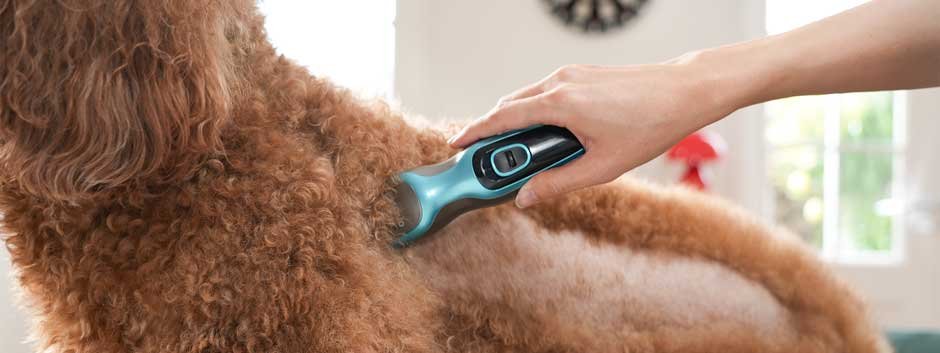Bringing a new pet into your life is a thrilling experience filled with love, companionship, and the joy of bonding with an animal who will soon become a cherished member of your family. However, pet ownership also comes with significant responsibilities. Whether you’ve welcomed a playful puppy, a curious kitten, or any other kind of pet into your home, it’s essential to understand the basics of pet care to ensure your new companion thrives in their new environment. This guide will provide you with the key information every new pet owner should know, covering everything from daily routines to grooming essentials like dog clippers.
Understanding Your Pet’s Needs
Before diving into the specifics, it’s important to recognize that each pet has its unique set of needs. Dogs, cats, rabbits, birds, and other animals all require different levels of care, attention, and resources. While some basic principles apply across the board, you should tailor your approach to the specific needs of your pet.

1. Providing a Safe and Comfortable Environment
The first step in pet care is creating a safe, comfortable, and enriching environment for your new companion. This involves:
- Space: Ensure your pet has enough space to move around freely. This could mean a spacious cage for a bird, a cozy corner for a cat, or a large, secure yard for a dog.
- Shelter: Pets need a space where they feel secure and protected. This could be a kennel for a dog, a cat tree for a feline, or a hutch for a rabbit. Make sure this area is quiet, away from excessive noise, and protected from the elements.
- Temperature Control: Ensure that your pet’s environment is kept at a comfortable temperature. Dogs and cats may need a warm bed during colder months, while other animals, like reptiles, may require specific temperature ranges.
2. Nutrition: A Balanced Diet
Just like humans, pets need a balanced diet to stay healthy. The nutritional needs of pets vary significantly depending on their species, age, size, and activity level. Here’s a basic guide:
- Dogs: A balanced diet for dogs includes a mix of proteins, fats, carbohydrates, vitamins, and minerals. Commercial dog food often provides this balance, but it’s important to choose high-quality options and consult with your vet about any specific dietary needs.
- Cats: Cats are obligate carnivores, meaning their diet must include animal-based proteins. High-quality cat food that lists meat as the first ingredient is usually a good choice. Avoid feeding your cat dog food, as it doesn’t meet their specific nutritional needs.
- Other Pets: Birds, rabbits, reptiles, and other pets each have their unique dietary requirements. It’s crucial to research and provide the appropriate food for your specific pet.
3. Regular Exercise
Exercise is vital for your pet’s physical and mental health. Different pets require different levels of activity:
- Dogs: Regular walks, playtime, and mental stimulation are essential for keeping your dog healthy and happy. The amount of exercise needed depends on the breed, age, and health of your dog. For example, a high-energy breed like a Border Collie will need more exercise than a smaller, less active breed.
- Cats: While cats are generally less active than dogs, they still need regular playtime to stay fit. Interactive toys, climbing trees, and laser pointers are great ways to engage your cat in physical activity.
- Small Pets: Smaller animals like hamsters or rabbits need space to move around and toys to stimulate their minds. Providing wheels for hamsters or tunnels for rabbits can encourage natural behaviors and keep them active.
4. Grooming: Maintaining Your Pet’s Hygiene
Grooming is an essential aspect of pet care that contributes to your pet’s overall health and well-being. While different animals have different grooming needs, all pets require some level of maintenance.
Dog Grooming: The Importance of Regular Clipping
For dog owners, regular grooming is particularly important, and dog clippers play a crucial role in this process. Here’s why:
- Preventing Matting: Dogs with long or thick coats are prone to matting, which can cause discomfort and skin issues. Regular clipping with high-quality dog clippers helps keep their coat manageable and mat-free.
- Health and Comfort: Overgrown fur can trap dirt and moisture, leading to skin infections or irritations. Trimming your dog’s fur, especially around sensitive areas like the paws and ears, ensures they stay clean and comfortable.
- Temperature Regulation: A well-trimmed coat can help your dog stay cool in the summer and warm in the winter, depending on their breed and coat type.
If you’re new to using dog clippers, it’s important to start slowly and make sure your pet is comfortable with the process. Many clippers are designed to be quiet and gentle to minimize stress for your dog. Regular grooming sessions can also be a great bonding opportunity.
5. Regular Vet Check-Ups
One of the most important aspects of responsible pet ownership is ensuring your pet receives regular veterinary care. Even if your pet appears healthy, routine check-ups are essential for early detection of any potential health issues.
- Vaccinations: Keep up with your pet’s vaccination schedule to protect them from common diseases.
- Preventative Care: Regular vet visits also allow for preventative care, such as flea and tick prevention, dental cleanings, and weight management advice.
- Emergency Care: Knowing where to go in case of an emergency is crucial. Establish a relationship with a trusted vet and know the location of the nearest 24-hour emergency clinic.
Understanding Pet Behavior
Understanding your pet’s behavior is key to providing the best care. Pets communicate their needs and emotions through their actions, and being attuned to these signals can prevent misunderstandings and strengthen your bond.
- Dogs: Dogs communicate through body language, vocalizations, and behaviors. Understanding signs of stress, fear, happiness, and aggression can help you respond appropriately to your dog’s needs.
- Cats: Cats can be more subtle in their communication. Purring often indicates contentment, while hissing or hiding might signal stress or fear.
- Other Pets: Each species has its way of communicating. For instance, rabbits thump their hind legs when alarmed, while birds may puff up their feathers when they’re feeling threatened or cold.
The Emotional Aspects of Pet Ownership
Owning a pet is not just about meeting their physical needs; it’s also about forming a strong emotional bond. Pets are incredibly sensitive to their owner’s emotions and can provide comfort, companionship, and joy. It’s important to:
- Spend Quality Time: Make time each day to interact with your pet. Whether it’s through play, training, or simply sitting together, these moments strengthen your relationship.
- Be Patient and Understanding: Pets, like people, have their good and bad days. Patience is key, especially when training or dealing with behavioral issues. Understanding that your pet may not always behave perfectly helps build a stronger, more compassionate relationship.
Conclusion: A Lifelong Commitment
Becoming a pet owner is a lifelong commitment that requires time, effort, and love. By understanding your pet’s needs, maintaining their health and hygiene, and fostering a deep emotional connection, you’ll ensure that your new companion has a happy and fulfilling life. Remember, the joy of pet ownership is not just in the good times, but in the journey of learning, growing, and building a bond with your pet that will last a lifetime. Whether you’re clipping your dog’s fur with the best dog clippers or simply sharing a quiet moment, each act of care strengthens the bond between you and your pet, making the experience of pet ownership one of life’s greatest rewards.

